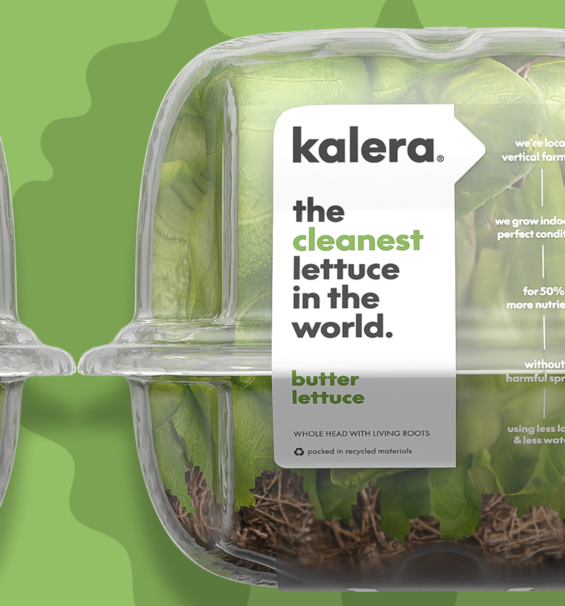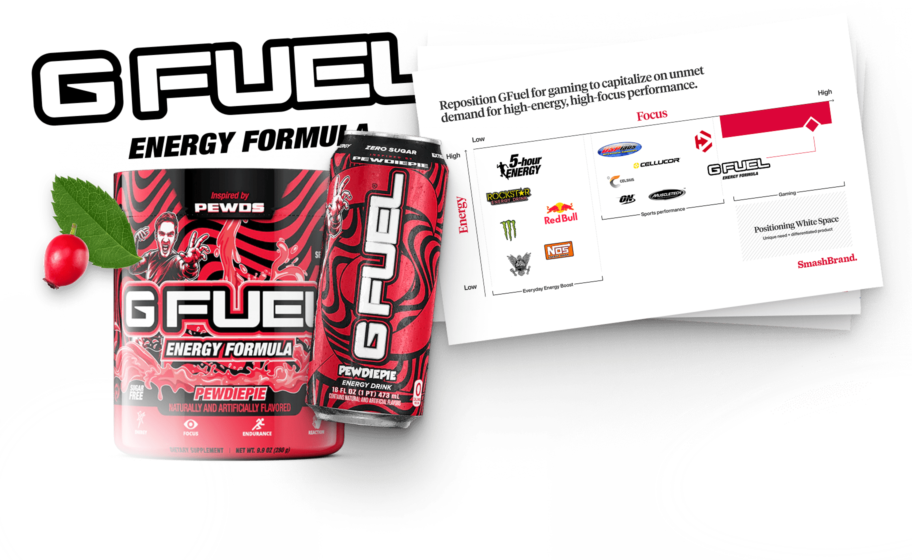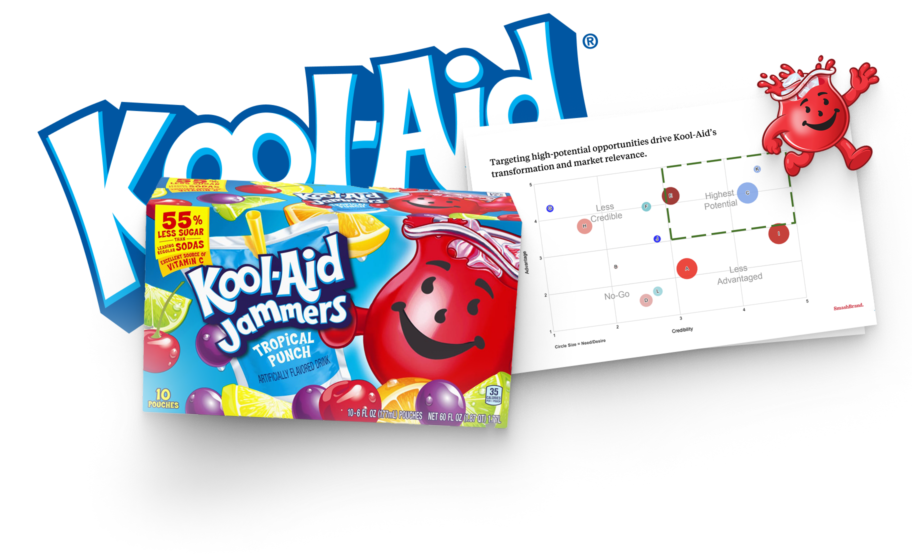A vertical brand extension can expand market share—or erode it. Get it wrong, and instead of gaining customers, you weaken brand equity and confuse loyal buyers. Premium or budget, moving up or down the pricing ladder, every brand extension strategy needs to be backed by real consumer insights—not assumptions.
Unlike reckless brand stretching, a vertical brand extension keeps a brand in its category while targeting a new price tier. A premium extension increases perceived value, while a lower-cost line extension attracts price-sensitive buyers. Both require careful execution to ensure they grow the brand rather than cannibalizing it.
This article outlines how to launch vertical brand extensions that strengthen your market position. It provides the tools to create a winning strategy, from market validation to retail strategy.
Understanding the vertical brand extension.
A vertical brand extension expands a parent brand within the same category by introducing a higher-end (premium) or lower-cost (value) product. This strategy allows brands to target new consumer segments while maintaining their brand image and overall positioning in the market. Unlike a category extension, which moves a brand into a new product category, a vertical line extension adjusts pricing, quality, or features within the existing category.
A successful brand extension must align with the brand’s core values and consumer expectations. This is where brand positioning plays a critical role. A premium product line extension should reinforce exclusivity and higher perceived value, while a value extension must maintain trust and quality without feeling cheap. Brands that fail to do this risk damaging brand awareness and consumer perception.
The key difference between vertical and horizontal extension is that vertical line extension stays within the same market, whereas horizontal branding expands into different spaces. Understanding brand extension attitudes and how consumers perceive and accept a new product is essential for ensuring a successful brand extension that enhances, rather than weakens, the parent brand.
Identify the right vertical brand extension opportunity.
A vertical extension isn’t just about launching a new product line at a different price—it’s about ensuring the move strengthens the existing brand rather than weakening it. Successful brands take a data-driven approach to identifying opportunities rather than relying on assumptions. Here’s how to determine whether an upward or downward extension is the right path:
Understanding consumer demand.
The first step is identifying who needs a premium version and a budget-friendly alternative. CPG brands should use a brand positioning map to visualize where current products stand in the market and where gaps exist. For an upward extension, ask: Do consumers want better ingredients, premium packaging, or exclusivity? For a value extension, is price keeping buyers away? Ignoring real demand leads to wasted investment and zero growth.
Validating market gaps with data.
A brand must validate the market gap before committing to an extension. Does the data prove that consumers are willing to pay more (or less) for a new tier of products? A brand positioning framework helps determine whether the move is viable or whether the existing brand is already meeting demand. Testing price elasticity, consumer intent, and market trends ensure the product line doesn’t cannibalize itself.
Competitive positioning.
Every extension isn’t worth pursuing. If the market is oversaturated, the brand identity can become diluted. Strong brand management requires evaluating competitors: Are they already offering similar products? Does the brand have a unique value proposition that competitors can’t replicate? If the extension doesn’t offer something new, it risks becoming a “me too” brand instead of strengthening the existing one.
Avoid common pitfalls that shrink market share.
A vertical brand extension can unlock growth—if executed with precision. But when brands miscalculate the extension direction, they risk brand dilution, cannibalization, and retail misalignment. Innovative brands use market mapping and a solid brand positioning process to ensure success. Here’s how to avoid the biggest mistakes:
Brand dilution.
Brand dilution happens when an extension confuses consumers about what the brand stands for. If a premium brand suddenly launches a budget-friendly product line extension, it risks losing its aspirational appeal. Likewise, consumers may question its credibility if a value-driven brand introduces a luxury upward extension.
Existing customers might hesitate to trust the new product if the extension feels disconnected. Consumers buy from brands with a consistent brand image, not those that jump between price points without reason.
How to avoid it: A strong brand positioning model ensures the extension fits the brand’s identity. Ask: Does this extension align with the core perception of our brand? Will it strengthen or dilute our positioning? A company must not chase trends that don’t reinforce its existing brand equity.
Cannibalization.
A successful brand extension must increase total sales, not shift purchases from one product to another. Cannibalization happens when an extension competes too closely with the core product, leading existing customers to trade down or up instead of expanding market reach.
If a value extension is priced too close to the original, budget-conscious buyers will opt for the cheaper option—hurting profitability. On the other hand, if a premium extension doesn’t justify its higher price, core customers may feel alienated rather than compelled to trade up.
How to avoid it: Use market mapping to identify fundamental pricing and audience segmentation gaps. The brand positioning process should clearly define the price and feature differences between the extension and the core product.
Retail misalignment.
Retail placement affects consumer perception. If an upward premium extension appears in discount stores, it immediately loses exclusivity. Shoppers who associate the brand name with affordability might be confused by an expensive product sitting next to budget items.
Similarly, placing a value extension in a high-end retailer alienates cost-conscious shoppers and creates friction in the buying process. When an extension doesn’t fit its retail environment, sales suffer—not because the product is terrible, but because consumers aren’t in the right mindset to buy it.
How to avoid it: The extension direction should dictate retail strategy. Upward extensions need premium distribution, such as boutiques, DTC, or specialty sections in grocery stores. Budget-friendly horizontal brand extensions should be accessible in mass-market retailers, club stores, and value-driven chains.
Craft a clear positioning strategy.
A vertical brand extension only succeeds if consumers see its value proposition. If the pricing, messaging, or positioning doesn’t make sense, the extension risks weakening the original brand instead of strengthening it. A well-crafted brand strategy ensures that the extension aligns with brand foundations, reinforces existing brand equity, and expands market share. Here’s how to do it right.
Define the unique value proposition.
Every vertical line extension must answer a fundamental question: what does this product offer that the existing ones don’t? Without a clear reason to exist, the extension can confuse buyers and dilute the brand concept instead of enhancing it.
A downward extension should make the brand more accessible without making it feel cheap. A premium extension should elevate the brand lifestyle extension while maintaining credibility. If the new product doesn’t serve a new consumer need or fill a pricing gap, it isn’t an extension—it’s just another SKU.
Key Considerations:
- Does the extension direction solve a real market problem?
- Does it expand the brand’s reach without overlapping with the original brand?
- Does it reinforce, rather than weaken, brand association with quality and trust?
Aligning pricing with perceived value.
Price isn’t just a number—it’s part of the brand positioning components that shape consumer perception. A premium vertical line extension must justify its higher price through superior ingredients, premium packaging, or exclusivity. A downward extension needs to offer affordability without sacrificing the brand’s reputation.
Brands risk losing credibility if pricing isn’t carefully mapped to consumer expectations. Overpricing a budget-friendly brand lifestyle extension makes it unappealing while underpricing a premium version can make it seem inauthentic.
Key Considerations:
- What price tier will consumers accept for this extension?
- Does the new price fit within the brand’s existing value structure?
- Does the extension enhance or dilute existing brand equity?
Messaging that enhances the parent brand.
A vertical brand extension shouldn’t feel disconnected from the established brand—it should reinforce what consumers already trust. The brand strategy must ensure that the extension strengthens the brand foundations rather than undermining them.
A premium extension direction should emphasize exclusivity, quality, and innovation. A downward extension should highlight accessibility and everyday value while maintaining brand association with reliability. Consumers will struggle to connect the new product with the original brand if the messaging isn’t aligned.
Key Considerations:
- Does the messaging maintain brand consistency across all extensions?
- Does it differentiate the extension without confusing the core audience?
- Does it build on the brand’s credibility rather than starting from scratch?
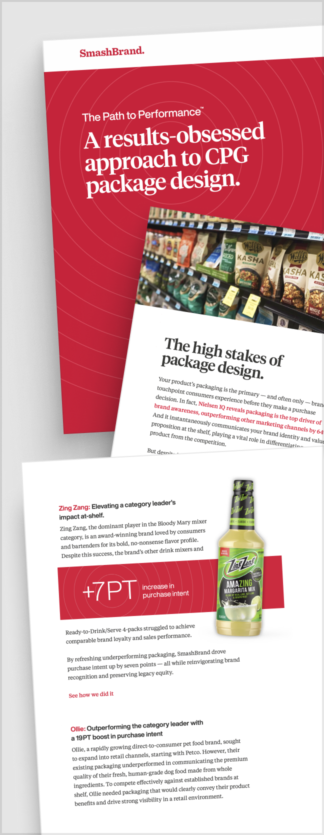
Path to Performance™
Taking a results-obsessed approach to CPG package design.
Learn how SmashBrand’s proprietary process – rooted in scientific principles, informed by data, and validated by your target audience – takes the guesswork out of package design and delivers guaranteed results.
"*" indicates required fields
Optimizing packaging, retail strategy, and consumer experience.
A successful brand extension strategy doesn’t stop at product development; it must be reinforced through branding, retail placement, and consumer experience. Whether a luxury brand is moving upmarket or a budget-friendly option is expanding its reach, every detail matters. A clear brand positioning strategy ensures the vertical line extension fits seamlessly into the market while maintaining the core brand values that consumers trust.
Elevating design, materials, and placement
For premium vertical brand extensions, packaging must signal exclusivity. Upscale materials, sleek designs, and refined finishes reinforce the perception of quality and sophistication. A luxury brand moving into premium grocery or direct-to-consumer (DTC) channels must ensure every detail—from color schemes to typography—aligns with consumer expectations.
A premium brand perception isn’t just about aesthetics; it extends to product feel, unboxing experience, and placement. Vertical brand extension evaluations should determine whether the new premium product belongs in specialty retailers, high-end supermarkets, or an exclusive online storefront.
Key Considerations:
- Does the packaging convey luxury and exclusivity?
- Is the extension positioned in high-end retailers or premium e-commerce platforms?
- Does it elevate the brand personality without alienating core customers?
Value Extensions.
An extension into budget-friendly territory requires a different approach. Bulk packaging, minimalist design, and cost-efficient materials make products more accessible while reinforcing value. Instead of premium finishes, brands should focus on functionality and affordability, ensuring the vertical brand extension meets price-sensitive consumer expectations.
Retail placement is just as important. A brand extension evaluation should determine whether club stores, discount supermarkets, or mass-market retailers are the right distribution channels. Brand positioning templates help structure these decisions, ensuring the new product is affordable yet aligned with the core brand values.
Key Considerations:
- Does the design reflect affordability without looking cheap?
- Is the packaging optimized for bulk purchasing or high-velocity retail environments?
- Does the strategy ensure accessibility without undermining trust?
Ensuring shelf visibility and clear differentiation.
Regardless of price positioning, a successful brand extension strategy must ensure the product stands out without confusing consumers. If a vertical line extension looks too similar to the original, shoppers may not understand its unique value. It risks losing its connection to the core brand values if it seems too different.
Branding, messaging, and structural design help differentiate products clearly. Premium products may use bold contrasts, metallic finishes, or minimalist branding, while value options rely on direct messaging and practical visuals. A brand positioning template helps define packaging guidelines to ensure strong brand perception across all price tiers.
Key Considerations:
- Is the extension visually distinct but still connected to the parent brand?
- Does the packaging clarify the product’s benefits and pricing tier?
- Is the placement optimized for strong shelf visibility and impulse purchases?
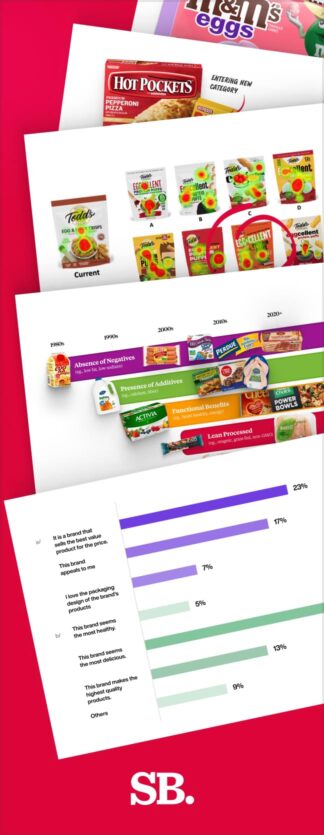
Nice Package
Don’t miss out on our monthly newsletter Nice Package!
Each month, we deliver a data-driven newsletter directly to your inbox, unpacking a critical topic in the FMCG & CPG industry.
"*" indicates required fields
Why testing before launching is critical for a vertical brand extension.
A vertical brand extension must strengthen rather than weaken the established brand name. Too often, brands rush into the market without testing, leading to unsuccessful brand extensions that confuse consumers, cannibalize sales, or fail to gain retail support. Data-driven decision-making eliminates these risks by validating product fit, pricing, and retail demand before launch.
Concept testing.
Not every brand extension makes sense to consumers. Even if an idea seems logical internally, new product ideation must be tested with real shoppers to ensure it meets their expectations. If the brand positioning statement says one thing, but the extension doesn’t reflect it, the launch risks confusing loyal buyers.
How to Validate It:
- Conduct consumer surveys and focus groups to test whether the extension feels like a natural evolution of the brand development strategy.
- Use A/B testing to compare reactions to different product names, designs, and formulations.
- Measure brand association—does the extension strengthen or dilute the parent brand?
Pricing validation.
One of the biggest reasons for unsuccessful brand extensions is mispricing. If a premium vertical extension doesn’t justify its price or a value extension is priced too close to the original, it confuses buyers and weakens sales.
How to Validate It:
- Test multiple price points to see what consumers are willing to pay.
- Analyze competitive pricing and category trends to ensure the product isn’t over- or under-positioned.
- Use psychological pricing strategies to reinforce brand perception—does the pricing support premium or budget positioning?
Retail buy-in.
Retailers won’t stock an established brand name just because of past success. They’ll pass if the extension doesn’t fill a market gap or drive incremental sales. Testing ensures retailers see actual demand before committing to shelf space.
How to Validate It:
- Conduct retail simulations and shopper studies to gauge demand in real-world settings.
- Present category data to retailers, proving the new product ideation adds value.
- Test packaging, messaging, and shelf placement to optimize in-store performance.
Launching a vertical brand extension that wins at the shelf.
Success isn’t random. It requires precise execution, innovative pricing, and clear differentiation. If you get these right, your extension will build trust, attract new customers, and increase market share. If you get them wrong, you risk brand dilution, cannibalization, or weak retail performance.
Every successful extension starts with real consumer validation, competitive insights, and optimized brand positioning. The winning brands don’t guess—they test, refine, and optimize before launch. That’s where SmashBrand comes in. Contact us today. Let’s craft an extension strategy that increases market share without risking brand equity.
Subscribe to
Nice Package.
A monthly newsletter that unpacks a critical topic in the FMCG & CPG industry.
Free Resource.

CPG product repositioning guide.
Explore the five undeniable signs your CPG product needs repositioning along with strategies for leveraging consumer insights for a guaranteed market lift.
Learn More About CPG product repositioning guide.
